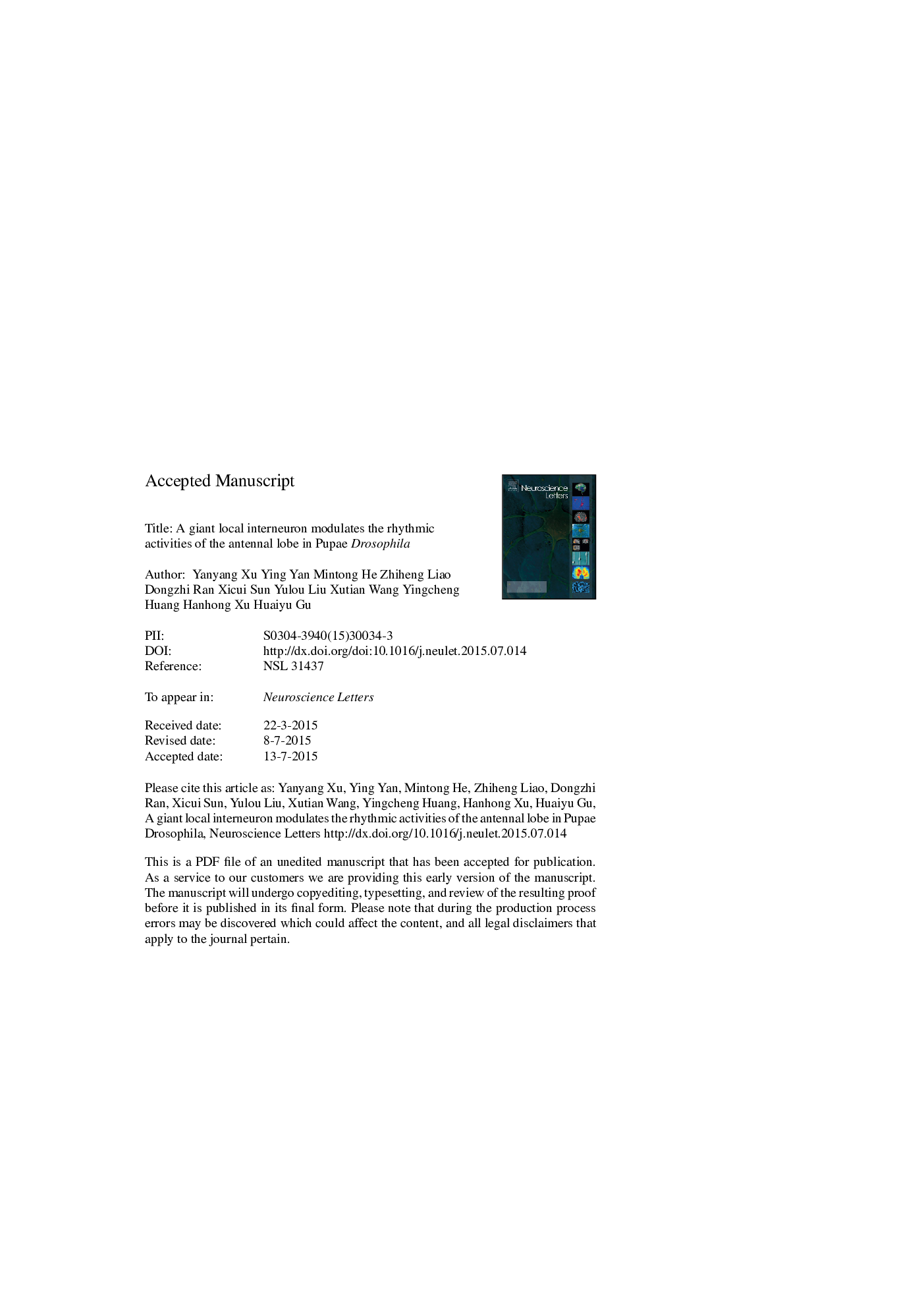| Article ID | Journal | Published Year | Pages | File Type |
|---|---|---|---|---|
| 6280506 | Neuroscience Letters | 2015 | 18 Pages |
Abstract
In Drosophila, olfaction is tightly related to feeding and reproduction. There are three classes of neurons forming synapses in the olfactory circuit: the olfactory receptor neurons (ORNs), projection neurons (PNs), and local interneurons (LNs). Here, we showed that giant local interneurons named GLNs, which were different from the classical neurons in the olfactory circuits, displayed distinctive rhythmic activities in the dorsolateral side of antennal lobe (AL) in Drosophila Pupae. Anatomically, GLNs were much larger than ipsilateral LNs and extended arborizations throughout the AL. Electrophysiologically, GLN exhibited typical 4-phased rhythmic spontaneous membrane activities, and the surrounding cells were dye-coupled when biocytin was injected into the cell body of GLN. Our study demonstrated that spontaneous activities of GLNs correlated with that of LNs and PNs. After the GLNs were damaged, the membrane activities of ipsilateral LNs and PNs became smaller, but faster. By depressing the firing frequencies of PNs and LNs, GLNs modulated the synchronization of AL and might play an important role as a “modulator” in the local circuit.
Related Topics
Life Sciences
Neuroscience
Neuroscience (General)
Authors
Yanyang Xu, Ying Yan, Mintong He, Zhiheng Liao, Dongzhi Ran, Xicui Sun, Yulou Liu, Xutian Wang, Yingcheng Huang, Hanhong Xu, Huaiyu Gu,
